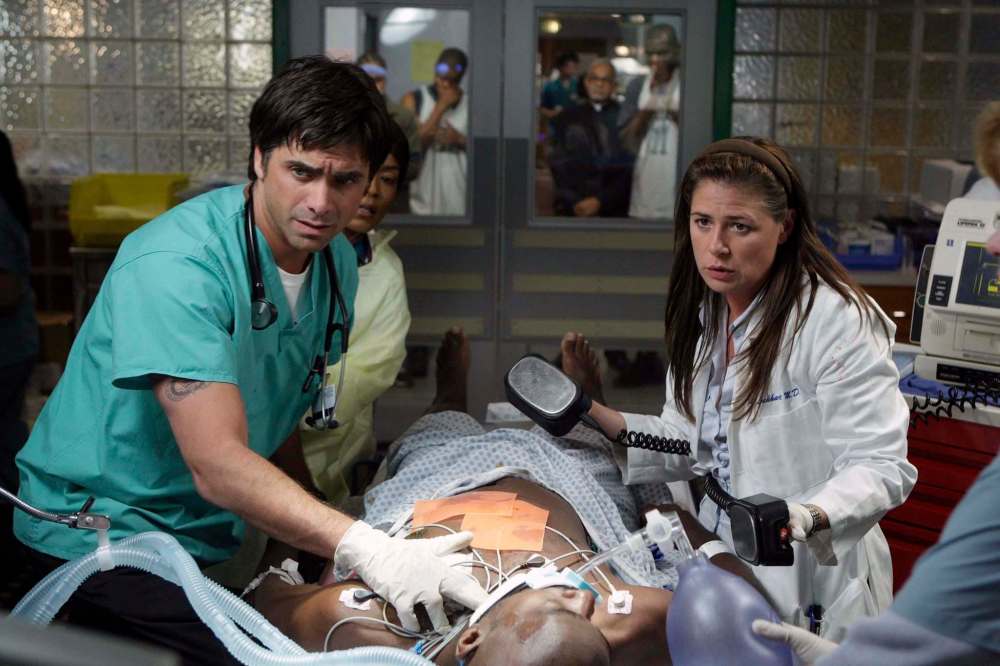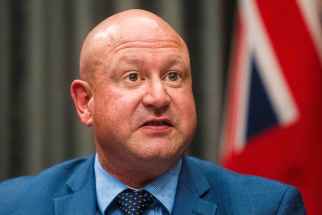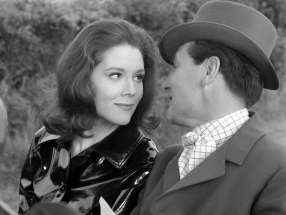Rerun relief Old favourites can make for nerve-calming viewing amid COVID-19 pandemic
Read this article for free:
or
Already have an account? Log in here »
To continue reading, please subscribe:
Monthly Digital Subscription
$0 for the first 4 weeks*
- Enjoy unlimited reading on winnipegfreepress.com
- Read the E-Edition, our digital replica newspaper
- Access News Break, our award-winning app
- Play interactive puzzles
*No charge for 4 weeks then price increases to the regular rate of $19.00 plus GST every four weeks. Offer available to new and qualified returning subscribers only. Cancel any time.
Monthly Digital Subscription
$4.75/week*
- Enjoy unlimited reading on winnipegfreepress.com
- Read the E-Edition, our digital replica newspaper
- Access News Break, our award-winning app
- Play interactive puzzles
*Billed as $19 plus GST every four weeks. Cancel any time.
To continue reading, please subscribe:
Add Free Press access to your Brandon Sun subscription for only an additional
$1 for the first 4 weeks*
*Your next subscription payment will increase by $1.00 and you will be charged $16.99 plus GST for four weeks. After four weeks, your payment will increase to $23.99 plus GST every four weeks.
Read unlimited articles for free today:
or
Already have an account? Log in here »
Hey there, time traveller!
This article was published 02/09/2020 (1934 days ago), so information in it may no longer be current.
In times of stress, we crave comfort TV.
There’s something soothing about revisiting a show from your formative years, or rewatching a favourite series in which you know what will happen. And with the new fall TV lineup looking a little spotty owing to the COVID-19 pandemic, there’s even more motivation to take a look back.
Here, the Free Press Arts & Life team offers up their ultimate nostalgic comfort watches to take you through the fall and winter.
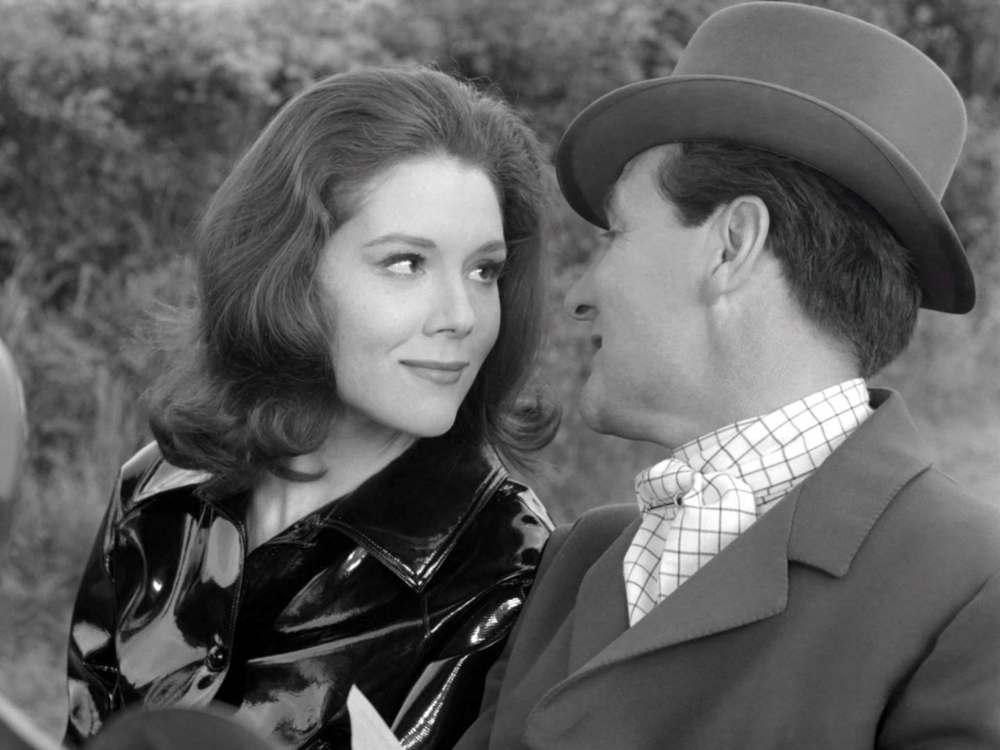
The Avengers: Series 4-5 (the Emma Peel years)
ITV/ABC, 1961-1969
No. of seasons: 6
Where to watch: DVD
Doubtless, there are many aspects to the British espionage TV series The Avengers that might be deemed politically incorrect seen through a contemporary prism. (If you believe the ’60s spy spoof has any enduring value in this century, try sitting through a Matt Helm movie sometime.)
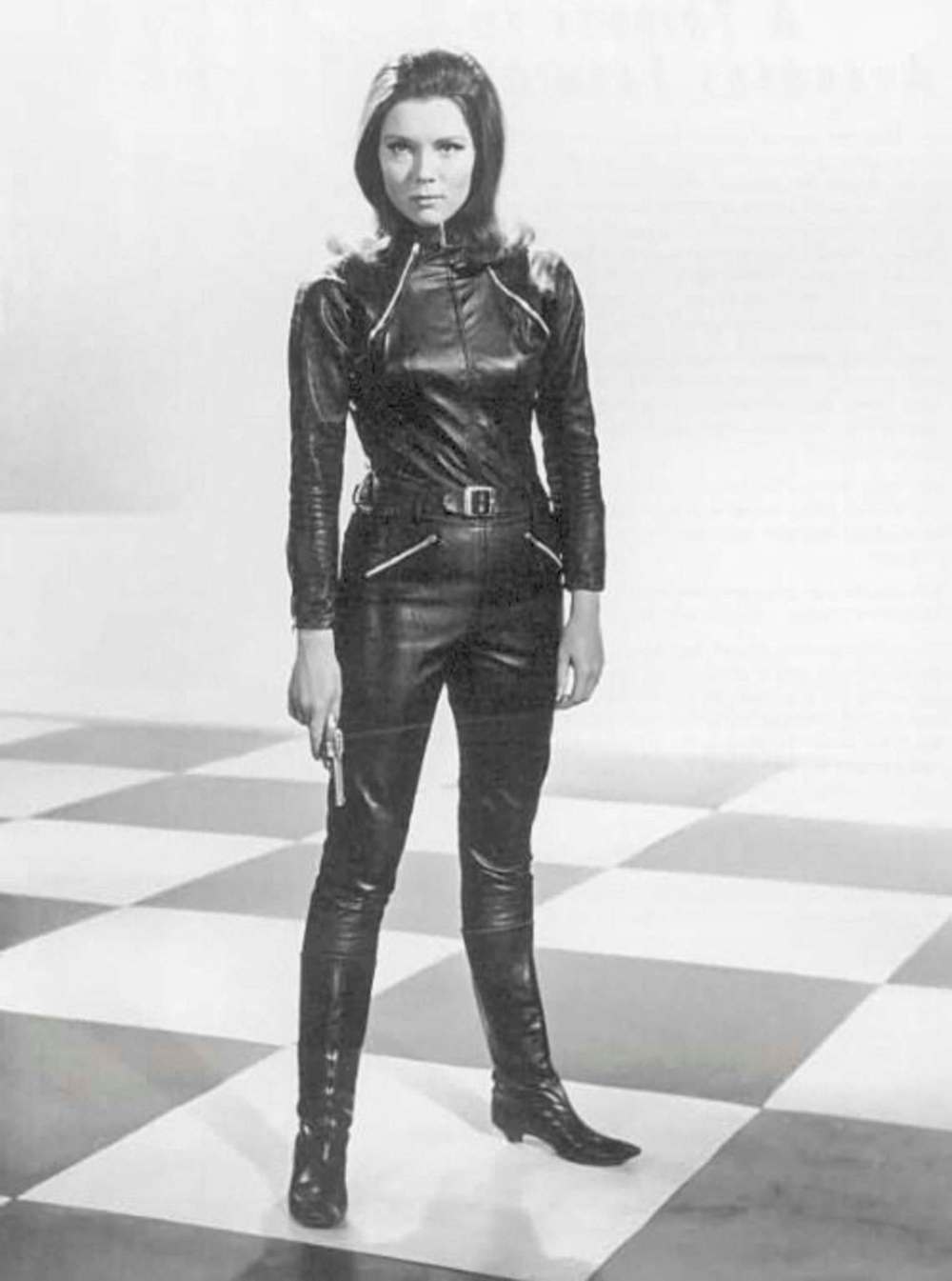
But generally, it’s surprising how well The Avengers holds up, at least pertaining to what I would call the series’ Emma Peel years, from 1965 to 1968. These are the seasons I purchased on DVD years ago and started watching in earnest this year, when going out was no longer an option.
Emma Peel, literally named for the male (“M”) demographic she was there to entice, was played by future Dame Diana Rigg, decades before the actress would bookend her TV career playing the fiendishly calculating Lady Olenna Tyrell in Game of Thrones.
Patrick Macnee’s urbane agent John Steed had been introduced in the first season as more of a standard issue secret agent before the series transformed into a witty, campy parody of the spy genre. His previous partner had been the tough-as-nails Cathy Gale (played by Goldfinger’s Honor Blackman) but the show reached its zenith with Macnee and Rigg playing off each other in witty, sexy ways. (Did Steed and the presumably widowed Mrs. Peel ever shed their Pierre Cardin/John Bates designer duds in each other’s company? The series was firmly ambiguous on that score.)
Since I watched most of the shows when I was a child, the series is all the richer in the rewatching, both in its relationships and its pop culture references, encompassing comic books (“The Winged Avenger”), science fiction (“The Cybernauts”) and even filmmaking itself (in the hilarious episode “Epic,” Emma becomes the unwilling heroine of her own movie, thanks to a mad Von Sternberg-like director.)
The series might have been classist, given that Steed was the model of an English gentleman, but the character’s “class” was manifest in impeccable manners and good taste. The upper crust as presented on the show was generally a domain of eccentrics, outright lunatics, megalomaniacs, or a combination of all three. This was especially evident in the notorious “A Touch of Brimstone” episode, which saw Emma Peel unforgettably kitted out in dominatrix gear, one of those TV moments you watch as an adult and think: “How was I even allowed to watch this when I was nine?”
— Randall King
Buffy the Vampire Slayer
The WB, 1997-2003
No. of seasons: 7
Where to watch: DVD
There’s a danger in revisiting things from your childhood. Will it hold up? Will it matter? Will those feelings you once felt still exist in the same way? Or even exist at all?
If your childhood, like mine, was defined by Buffy the Vampire Slayer, then I have some good news for you: yes, the show holds up and yes, you will feel everything you felt when you first watched it… and so much more.
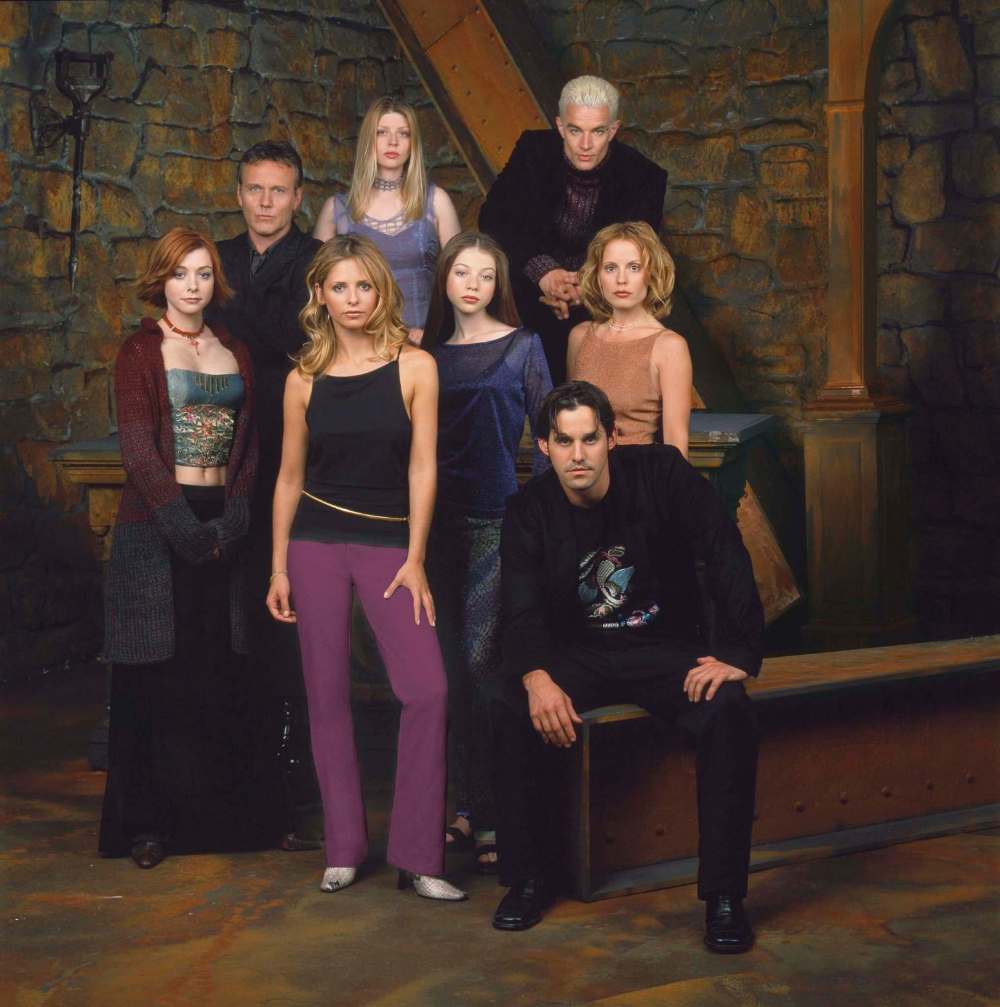
The low-budget supernatural teen soap opera about a cheerleader (Sarah Michelle Gellar) destined to kill vampires unceremoniously debuted in 1997 and ran for seven seasons until 2003. It was never popular in the ratings but against all odds made an unprecedented cultural impact, changing the way television was made and how it was perceived as an emerging artform. Buffy walked so The Sopranos — and all of “prestige” TV, really — could run.
Not only did Buffy change the way TV could be utilized to tell stories by setting a new standard for dialogue, creatively using language, and launching the now-standard format of episodic stories seamlessly interwoven into overarching serial narratives, it also changed the kinds of stories television was telling, where teenagers and their hopes and dreams and fears were taken seriously and where women had agency and strength and power.
As the series evolved — and as creator, writer, director and current problematic white guy Joss Whedon grew smarter and more creative — viewers were treated to magnificently crafted episodes including:
● “Hush” (Season 4, Episode 10), which is nearly free of dialogue and relies largely on visual storytelling when a gang of very creepy dudes steals the voices of all the residents of Sunnydale.
● “The Body” (Season 5, Episode 16), in which an important character dies of natural causes, forcing characters who exist in a supernatural world to confront the mundane, impossible grief of the natural world.
● “Once More, With Feeling” (Season 6, Episode 7), a musical episode that established a precedence for TV shows of the future. It was also the only episode of Buffy filmed in widescreen and ran eight minutes longer than the other episodes in the show — two more Buffy innovations that are now standard in TV.
What I discovered during a weekend rewatch of my top 30 favourite episodes — other than the alarming fact that Giles (Anthony Head) was, in fact, a high-key hottie all along — is that Buffy the Vampire Slayer didn’t only change me… she changed the world. A lot.
— Frances Koncan
ER
NBC, 1994-2009
No. of seasons: 15
Where to watch: DVD
For me, ER, Michael Crichton’s long-running medical drama that served as the dramatic anchor for NBC’s Thursday-night Must See TV, sits at the centre of the Venn diagram between nostalgia TV and comfort watch.
I was nine years old when the series — spanning 15 seasons and a staggering 331 episodes — debuted in September 1994 and 24 when it ended so, in many ways, I grew up alongside it (though my understanding of the medical jargon improved dramatically on rewatching it as an adult). Owing to the sheer volume of episodes, ER is tailor-made for binging — I’ve done a full-series rewatch a few times now — but sadly, it’s only streaming on Hulu in the U.S.
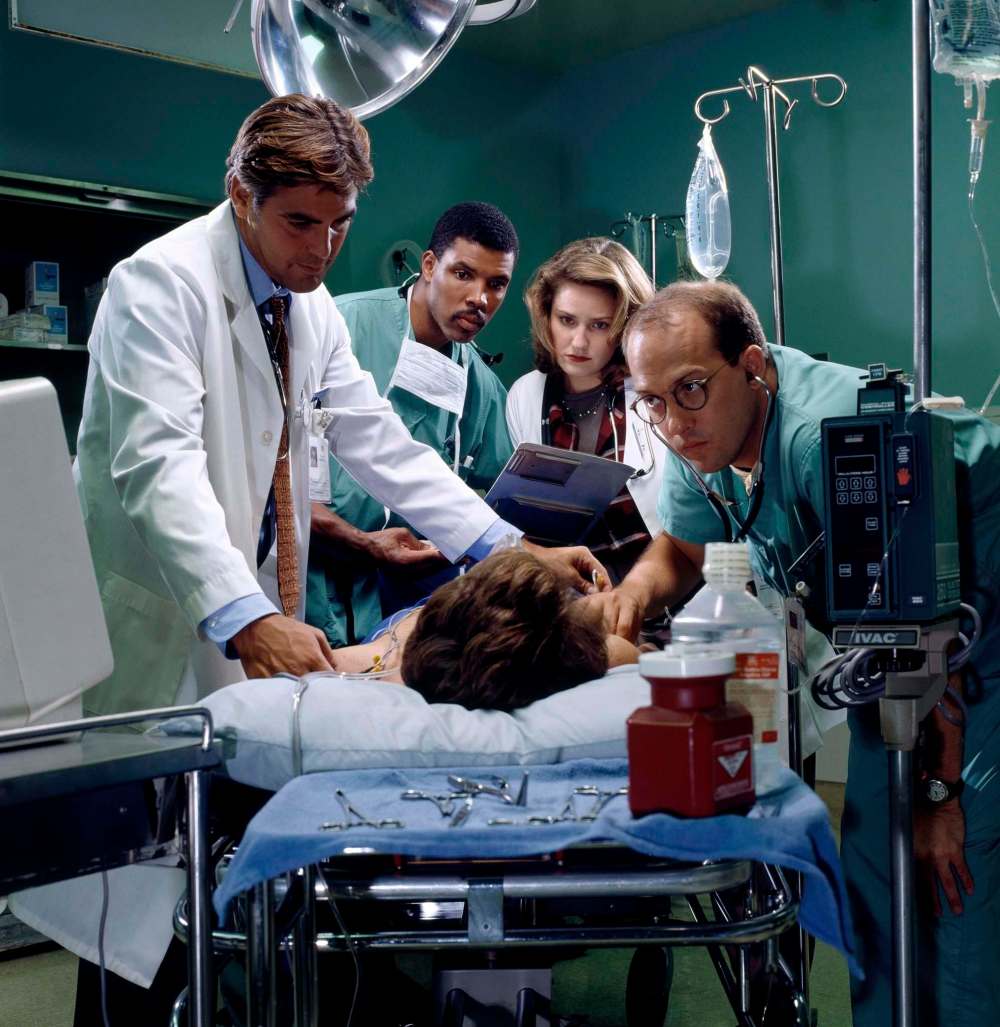
The hour-long drama is about the emergency room staff at County General Hospital in Chicago, a chronically underfunded teaching hospital that tends to the city’s most marginalized people. The show’s strength is in its estimable ensemble cast which, much like any workplace and its roster of employees, changes over the course of the series’ run. And while ensemble casts don’t really have a “main character” per se, the show’s throughline is certainly the journey of Dr. John Carter — the fresh-faced medical student turned grizzled doctor played by Noah Wylie for 11 seasons.
But while Dr. Carter was long a favourite of mine growing up (Wylie is cute, sue me), rewatching it as an adult has made me realize the show is just as much about Dr. Mark Greene, the chief resident/moral compass played by Anthony Edwards, Dr. Greg Pratt, the loose cannon (and proxy to George Clooney’s cowboy pediatrician Dr. Doug Ross) played by Mekhi Phifer, and television’s best character, Abby Lockhart — the nurse who becomes a doctor despite so many odds in a masterclass performance by Maura Tierney. The nuance and humanity that these three brought to their characters — Edwards in the beginning, Tierney and Phifer at the middle and end — really gave the show its heart.
And no spoilers, but these three all have episodes that will make you absolutely ugly cry.
ER took big swings in both its premise (a fast-paced, jargony medical drama is an unlikely prime-time hit) and its storylines: because it took place in a county hospital, the writers could delve into systemic issues of racial and socio-economic barriers to health care; gang and domestic violence; and racism, sexism and LGBTTQ+ discrimination in health care (and the workplace) in a way that very few shows did — or could. It was dramatic without being soapy, smart without being condescending, prinicipled without being preachy — and there are many episodes that have left an indelible imprint on my brain.
I watch a lot of TV, but I always come back to County.
— Jen Zoratti
Friends
NBC, 1994-2004
No. of seasons: 10
Where to watch: Netflix
The one where the jokes haven’t aged well? That would be Friends.
While it’s certainly not the only show to have its social commentary retrospectively chastised, rewatching the ‘90s sitcom two decades later offers a special kind of cringe that hits all the wrong notes.
Friends follows the charmed existence of Rachel (Jennifer Aniston), Phoebe (Lisa Kudrow), Monica (Courteney Cox), Chandler (Matthew Perry), Joey (Matt LeBlanc) and Ross (David Schwimmer) as they navigate work, life and love in Manhattan — an unnecessary recap for a show that ranked among the top 10 prime-time TV programs in the U.S. for the entire decade it was on the air.
And it’s still really popular. Friends became one of the most-watched shows on Netflix when it started streaming in 2015 thanks, I can only assume, to the power of millennial nostalgia-seekers like myself.
I was about 10 years old when I watched the series for the first time. It was the cornerstone of my Thursday-night TV marathons, sandwiched between episodes of Survivor and Will & Grace.
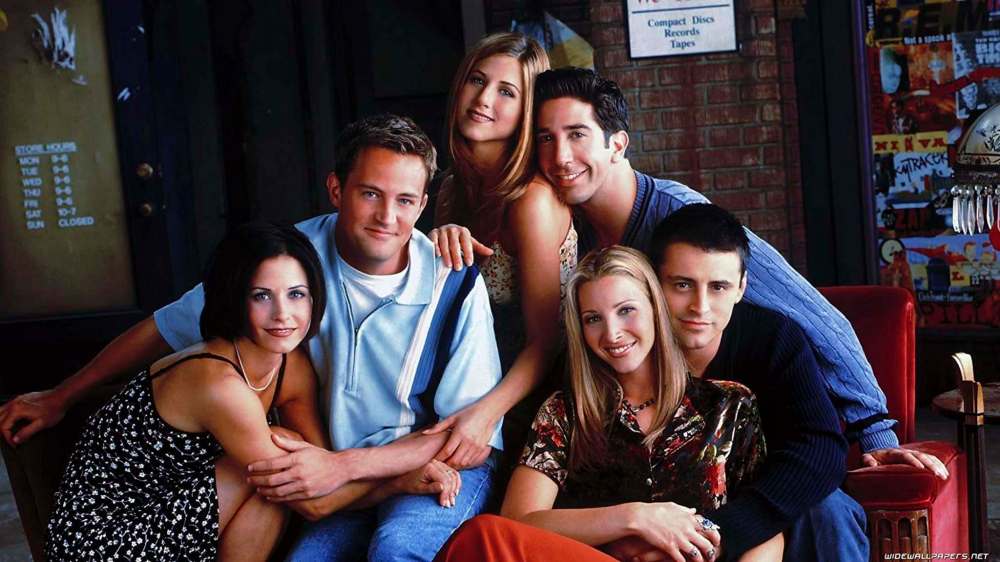
I loved Friends for the silliness of Phoebe and Joey and the romantic entanglements of everyone else. The writing was clever, the friendships — particularly between Rachel and Monica — felt genuine and the idea that six 20-somethings living in New York could afford to spend all their time in a coffee shop was a pleasant fantasy.
Most of that held up when I rewatched as an adult, but like revisiting any pre-teen friendship, things weren’t as easy or carefree as they once were.
For one, the show is overtly homophobic. Season 1 sets up the long-running tradition of lesbian jokes about Ross’s ex-wife Carol and the dial moves to transphobia when Chandler’s dad, a transgender woman played by Kathleen Turner, is introduced in later episodes.
The whiteness of the show is also overwhelming. Ross’s love interests Julie (Lauren Tom) and Charlie Wheeler (Aisha Tyler) are two of the only people of colour featured in a sea of white cast members. Add in some sexism and fatphobia and you have a sitcom that would be swiftly cancelled, on network television and social media, in 2020.
Friends may be a product of its time, but the show’s ongoing popularity makes those problematic themes worthy of conversation.
— Eva Wasney
Golden Girls
NBC, 1985-1992
No. seasons: 7
How to watch: Coming to Prime Video in September
“Picture it: Sicily, 1922.”
With that set-up, we know we’re in for one of Sophia Petrillo’s instructive tales, usually delivered in the kitchen as the “girls” devour a late-night cheesecake.
It’s that predictability and episodic structure that make Golden Girls the ultimate in comfort TV.
The half-hour show, which is finally coming to Prime Video this month after a baffling absence from Canadian streaming services, followed the lives of four older female roommates living in Miami: hotsy-totsy widow Blanche Devereaux (Rue McClanahan), divorced teacher Dorothy Zbornak (Bea Arthur); dotty Rose Nylund (Betty White), a widow originally from St. Olaf, Minn.; and Dorothy’s mother, Sophia (Estelle Getty), who suffered a stroke that destroyed the tactful part of her brain.
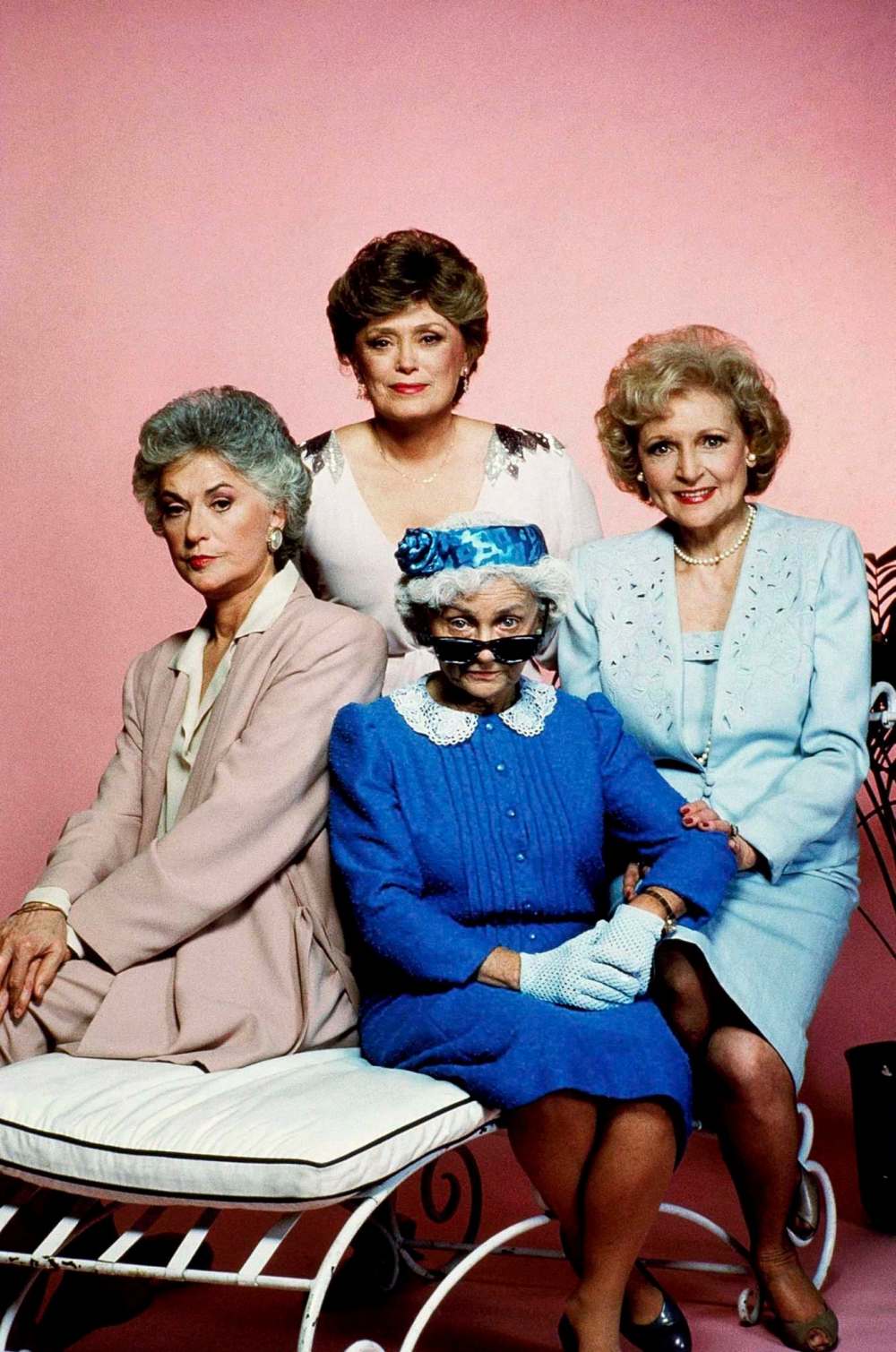
The women have little in common. Blanche is promiscuous and pretending to be 45; Rose is naive and prone to telling rambling stories about her hometown; Dorothy is no-nonsense and doesn’t suffer fools (Arthur’s way with a withering look is unparalleled); and tiny Sophia is a dynamo with no filter.
It’s no surprise that there’s a touring puppet parody of the show; the formula is easy to mimic. It is classic sitcom to its core with its set-’em-up-knock-’em-down punchlines — Blanche is a tramp, Rose is dim, Dorothy can’t get a date — but it almost never relies on the hackneyed misunderstandings of shows like Three’s Company to drive the plot.
It also features four peerless comedic actresses who created indelible characters out of what could have been one-note stereotypes, who made female friendship feel important (no matter what suitors come and go, from Hal Linden to Jerry Orbach, the girls stick together).
What’s surprising about the show is, despite the dated outfits — The pantsuits! The caftans! The whatever-the-hell-it-is you call poor Dorothy’s outfits! — the content itself remains quite timely, even progressive.
Sure, there are a few references that set it squarely in the ‘80s (the girls’ abiding affection for Burt Reynolds, for one), but it tackles issues no other show would touch — and some that even now are given short shrift. Menopause, age discrimination, IVF and senior sexuality were all handled with sensitivity (I still remember the speech Dorothy gives the doctor who dismissed her Chronic Fatigue Syndrome: “I came to you sick. Sick and scared. And you dismissed me. You didn’t have the answer and instead of saying ‘I’m sorry, I don’t know what’s wrong with you,’ you made me feel crazy…I suspect that had I been a man I might have been taken a little bit more seriously.”)
Of course, I also remember every word of the wonderful song Rose and Dorothy write as their entry into a Miami tourism contest. That’s range.
I own the complete series on DVD, but I know I’ll be turning to Prime when I need a quick pick-me-up of coffee and cheesecake with the girls.
— Jill Wilson
Hill Street Blues
NBC, 1981-1987
No. of seasons: 7
Where to watch: Single episodes are available to buy on iTunes and Amazon
Without cop shows, there isn’t television as we know it. And without Hill Street Blues, we don’t have cop shows, or at least the best ones, on television today.
And we wouldn’t have the famous advice offered by Sgt. Phil Esterhaus at roll call, “Let’s be careful out there,” which opened each episode of the series before actor Michael Conrad, who played the desk sarge, died in 1984.
The hour-long series, which debuted in 1981 and aired 146 episodes before it ended in 1987, broke the mould of what a cop show — and to some extent society’s view of the police — would be.
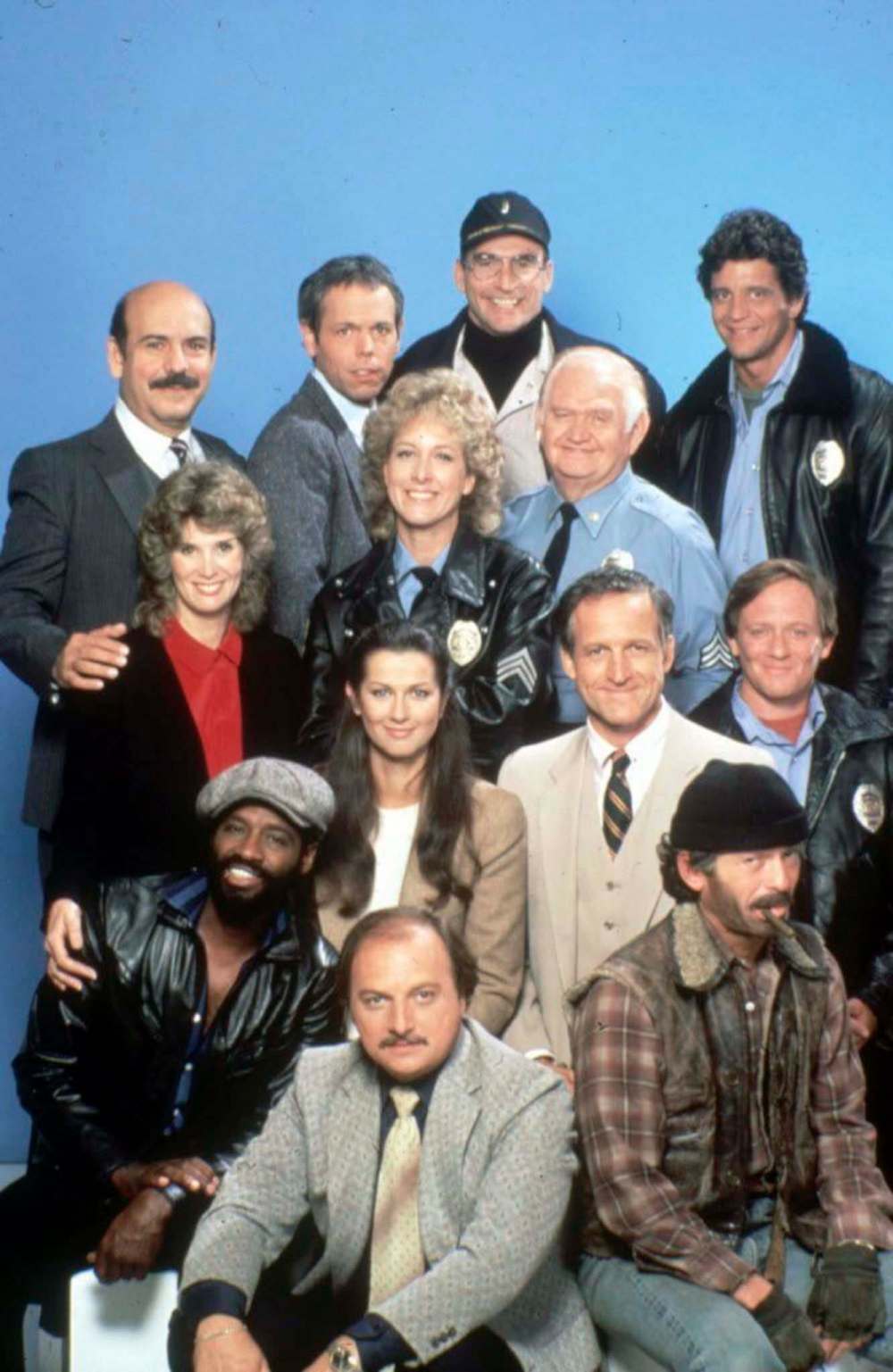
Without Hill Street Blues’ critical success — despite 98 Emmy nominations, it had to be saved from cancellation owing to poor ratings throughout its run on NBC — it’s difficult to imagine series such as The Wire would have a opportunity to build upon Hill Street Blues’ dramatic tension, ensemble casting, sense of humour and view of society’s problems.
Instead of good guys catching the bad guys like on Adam-12, Dragnet or Ironside, Hill Street Blues blurred the line between who was good and bad. Sure, there many good and honourable police trying to do a difficult job in the inner-city of a typical American city. There were also lousy cops, drunk cops, corrupt cops, racist cops, many of whom were given second and third chances to keep their badge after transgressions.
Even the show’s lead, Capt. Frank Furillo (Daniel J. Travanti), who appeared so clean to his high-echelon colleagues that he was derisively named “St. Francis of Furillo,” was a recovering alcoholic who at the beginning of the show was having a hush-hush affair with the precinct’s public defender, Joyce Davenport (Veronica Hamel).
That relationship was the beating heart of the series. Their arguments during the day about police officers overstepping their bounds when making arrests would turn into shouting matches. They then would go home and wailing would become whispers, rancour would become romance. At least most of the time.
Many of Hill Street’s old-timey items such as pagers, rotary phones and mugshot books, for instance, seem so dated, but violent crime, catch-and-release justice, police brutality and armoured rescue vehicles remain as relevant as ever.
It’s the series’ supporting characters that helped make Hill Street Blues unforgettable. Bruce Weitz won an Emmy for playing Belker, an undercover cop with perpetual five-o’clock shadow and a penchant for biting those he arrested, yet no spine when dealing with his mother on the phone; partners Hill (Michael Warren) and Renko (Charles Haid), who bridged the races to form a patrol partnership through good times and bad; and Sgt. Lucy Bates (Betty Thomas), who faced the regrettable sexism of the 1980s and fired back with verbal shots of her own.
The show was also a stepping stone for a long list of guest stars, such as Linda Hamilton, Jennifer Tilly, Jeffrey Tambour, and Winnipeg’s Mimi Kuzyk, who played Det. Patsy Mayo for a couple of seasons.
A poor copy of the pilot episode is on YouTube, but single episodes are available to buy on iTunes and Amazon. The fourth-season episode “Grace Under Pressure,” which focuses on the death of dear old sarge Esterhaus — and indirectly with the death of actor Conrad — is at wfp.to/pressure.
— Alan Small
Twin Peaks
ABC (1990-91), Showtime (2017)
No. of seasons: 2
Where to watch: Crave TV
David Lynch’s path as an artist has taken him from surreal art-house cinema in the 1970s to delivering daily weather reports on YouTube during the COVID-19 pandemic. But smack-dab in the middle of this fascinating arc, he helped deliver a brief (but not quite brief enough) two-season murder mystery on the small screen that had millions of TV watchers asking the same question: Who killed Laura Palmer?
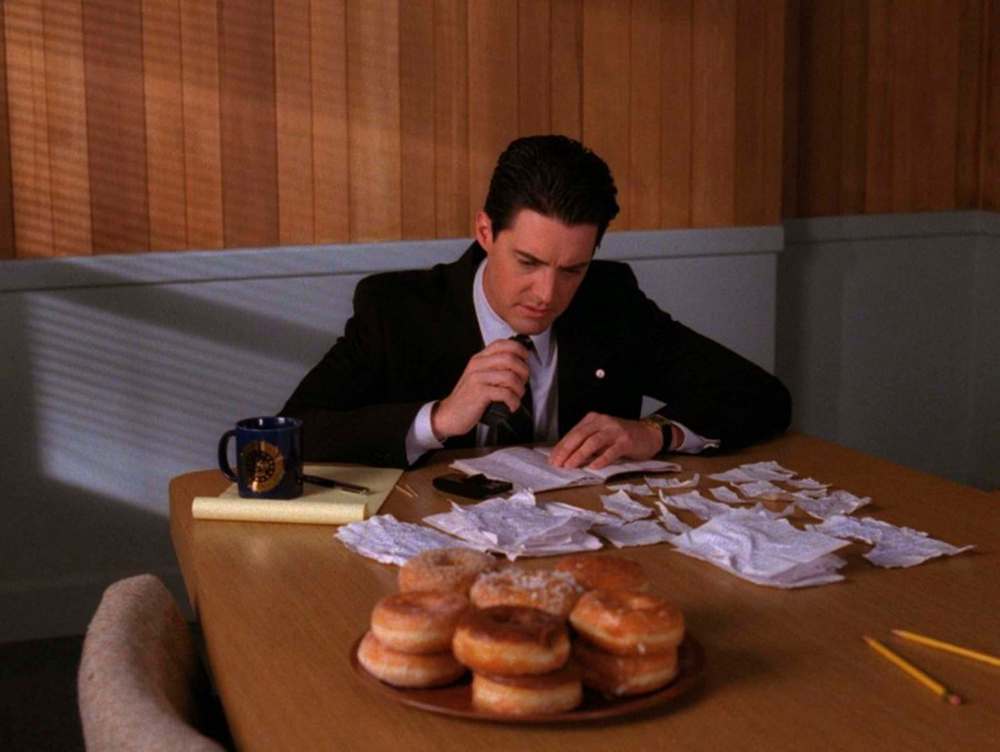
The initial run of Lynch and co-creator Mark Frost’s wonderful and strange Twin Peaks ran on ABC for 30 episodes over two seasons. The first season, which began April 1990, was a tight eight episodes in length, and followed FBI Special Agent Dale Cooper (Kyle MacLachlan) as he discovered the quirks of the sleepy but surreal titular town while trying to solve the murder of all-American high school sweetheart Laura Palmer. Much coffee and pie was consumed in the process.
As Cooper delved deeper into the case, Twin Peaks’ peculiar cast of characters (including Laura Palmer) were all shown to be harbouring secrets, some of which were dark, deeply disturbing and/or deadly. The physical manifestation of this came in the form of Bob (Frank Silva), an incredibly creepy and evil presence who flitted between the town and the red-curtained alternate dimension of the Black Lodge.
There had to be a reveal of Laura Palmer’s killer of course, and Lynch and Frost deftly delivered the goods. Unfortunately the reveal happened in the seventh of the 22-episode second season, meaning the final 15 shows episodes meandered through all manner of irrelevant and unnecessary plot lines that were at times hilarious and at others cringey. (In one episode a character is bitten in the nose by a pine weasel during a fashion show fundraiser; in another Nadine, a one-eyed woman in her 50s with super strength, joins the high school wrestling team. Etc.)
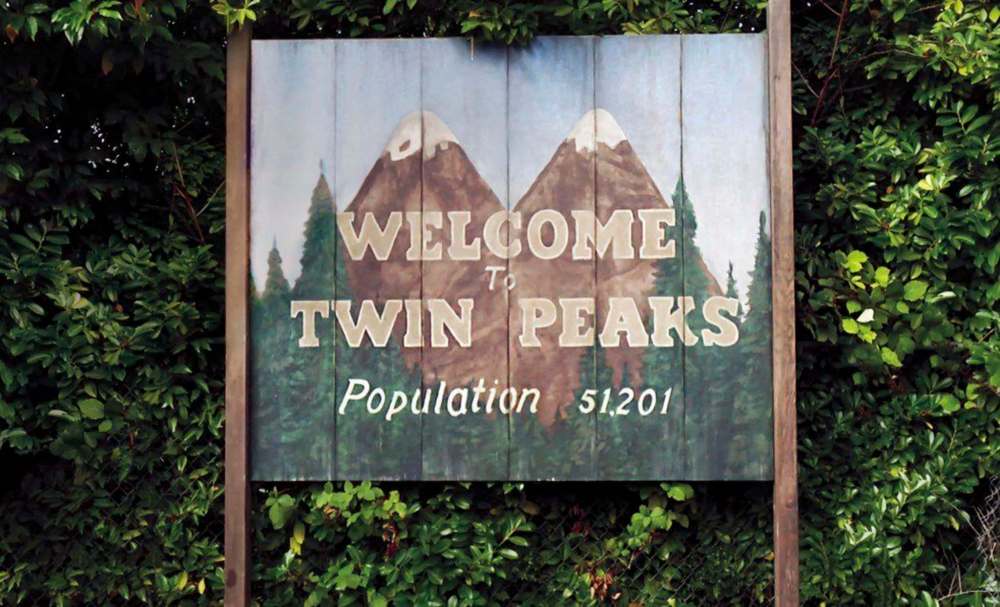
There weren’t a ton of kids my age watching Twin Peaks when it first aired (I was in junior high when it started and high school when it finished). But Twin Peaks was a TV event (at least at the outset), with writing and storylines that broke the small-screen mould. When I could find someone who was watching the show, I knew I had a kindred spirit.
When Twin Peaks: The Return (also on Crave) was announced to run on Showtime in 2017, there was very cautious optimism. When do reboots/reunion shows ever work out? I needn’t have worried; Lynch and co-creator Mark Frost had in fact saved the best for last — we just had to wait 25 years to see it.
In the interim, Lynch’s visionary, surreal murder mystery proved to be incredibly influential on the small screen. From the fever dreams of Tony Soprano to the worlds of Lost, Riverdale, Stranger Things and beyond, Twin Peaks carved out a space for the weird and wonderful on TV drama, and storytelling on the small screen is all the better for it.
— Ben Sigurdson

